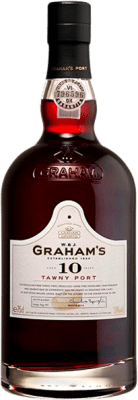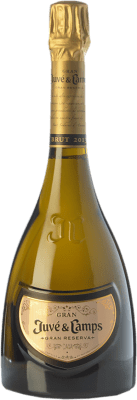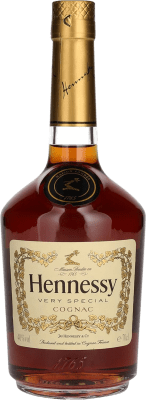Boekenhoutskloof The Wolftrap Rosé Swartland 75 cl. Origin.
Producer.
Boekenhoutskloof (Boekenhoutskloof Winery).
Name.
Boekenhoutskloof The Wolftrap Rosé.
Variety.
![]() Syrah, Grenache Tintorera, Cinsault.
Syrah, Grenache Tintorera, Cinsault.
Country of origin.
Region of origin.
Appellation of origin.
Weight.
1.500 gr. (1,5 Kg.).
Producer |
|
Name |
Boekenhoutskloof The Wolftrap Rosé. |
Variety |
|
Country of origin |
|
Region of origin |
|
Appellation of origin |
|
Weight |
1.500 gr. (1,5 Kg.). |
Boekenhoutskloof The Wolftrap Rosé Swartland 75 cl. Data sheet.
Typology.
Variety.
![]() Syrah, Grenache Tintorera, Cinsault.
Syrah, Grenache Tintorera, Cinsault.
Vintage / Harvest.
Format.
Bottle.
Capacity.
75 cl.
Alcohol content.
12% Vol.
Weight.
1.500 gr. (1,5 Kg.).
Visual tasting note.
Golden reflections, Pink highlights, Cherry color, Soft pink.
Olfactory tasting note.
Fruits of the forest, Candies, Strawberry candy, Sour notes.
Tasting note.
Licorice, Round, Deep, Soft attack.
Recommended pairing.
Spicy dishes, Mixed rice, Cold meats, Seasonal vegetables.
Consumption temperature.
12ºC.
Consumption.
It is recommended to drink in moderation and demonstrate a responsible consumption of alcoholic beverages.
Typology |
|
Variety |
|
Vintage / Harvest |
Currently marketed by the producer. |
Format |
Bottle. |
Capacity |
75 cl. |
Alcohol content |
12% Vol. |
Weight |
1.500 gr. (1,5 Kg.). |
Visual tasting note |
Golden reflections, Pink highlights, Cherry color, Soft pink. |
Olfactory tasting note |
Fruits of the forest, Candies, Strawberry candy, Sour notes. |
Tasting note |
Licorice, Round, Deep, Soft attack. |
Recommended pairing |
Spicy dishes, Mixed rice, Cold meats, Seasonal vegetables. |
Consumption temperature |
12ºC. |
Consumption |
It is recommended to drink in moderation and demonstrate a responsible consumption of alcoholic beverages. |
Boekenhoutskloof The Wolftrap Rosé Swartland 75 cl. Description.
Product reference.
WAN4549843
Accessories.
This product is provided in the conditions and format in which it is marketed at the current time. In cases where the product includes an additional packaging, box and/or case, These accessories will be included in the shipment as long as they comply with the dimensions of the special packaging adapted and approved for the transport of beverages.
In general, the images of the products that we publish on our website are only relevant for graphic purposes. The images do not show other accessories such as additional packaging (box, case, etc.) or promotional elements that may occasionally be included by the manufacturer along with the product. If you wish, we can inform you about the additional packaging, elements and accessories included with the product at the current time.
Weight.
1.500 gr. (1,5 Kg.).
Actual price.
7,95 € . This product is currently not available.
Storage position.
Lateral position, horizontal bottle.
Storage temperature.
Store at a constant temperature between 10-17ºC.
Humidity should be constant around 60-80%.
Recommendations.
Keep preferably away from light.
Product reference |
WAN4549843 |
Accessories |
This product is provided in the conditions and format in which it is marketed at the current time. In cases where the product includes an additional packaging, box and/or case, These accessories will be included in the shipment as long as they comply with the dimensions of the special packaging adapted and approved for the transport of beverages. |
Weight |
1.500 gr. (1,5 Kg.). |
Actual price |
7,95 € . This product is currently not available. |
Storage position |
Lateral position, horizontal bottle. |
Storage temperature |
Store at a constant temperature between 10-17ºC. |
Recommendations |
Keep preferably away from light. |
Boekenhoutskloof The Wolftrap Rosé Swartland 75 cl. Legal notice.
Please keep in mind.
The information provided and referred to the product features and details has been provided by the expert, manufacturer or producer or published on the official sites. In no case can it be considered as assessment made by our team, unless expressly stated otherwise.
We suggest you to refer to the comments and reviews posted by our customers and users to expand and contrast this information.
Misreading.
Our team provides this information and details in ESPAÑOL language.
If you browse in another language note that the information contained may have been translated from the original language through an automated real-time process that has not been supervised by our human team.
In case of doubt, misunderstanding or misreading about the content of this information you should refer to the original version of this page or contact our customer service team.
Product image.
The product image or its label is only relevant for graphic purposes, so it may not match the identification of the vintage or other features and details of the product for sale. This product is provided in the conditions and format in which it is marketed at the current time.
This product is not identified or supplied in a specific vintage. The product image and label may not match the vintage identification or other characteristics and details of the product for sale.
Accessories.
This product is provided in the conditions and format in which it is marketed at the current time. In cases where the product includes an additional packaging, box and/or case, These accessories will be included in the shipment as long as they comply with the dimensions of the special packaging adapted and approved for the transport of beverages.
In general, the images of the products that we publish on our website are only relevant for graphic purposes. The images do not show other accessories such as additional packaging (box, case, etc.) or promotional elements that may occasionally be included by the manufacturer along with the product. If you wish, we can inform you about the additional packaging, elements and accessories included with the product at the current time.
Country of origin.
Spain. This product is shipped from Spain.
Legal Notice.
It is against the law to sell or supply alcohol to, or to obtain alcohol on behalf of a person under the age of 18 years.
If you are not more than 18 years old, you must leave this website.
Return policy.
Return policy.
Last update: Tuesday, 21 Jan 2025
For further information: Terms and conditions of the service.
Please keep in mind |
The information provided and referred to the product features and details has been provided by the expert, manufacturer or producer or published on the official sites. In no case can it be considered as assessment made by our team, unless expressly stated otherwise. |
Misreading |
Our team provides this information and details in ESPAÑOL language. |
Product image |
The product image or its label is only relevant for graphic purposes, so it may not match the identification of the vintage or other features and details of the product for sale. This product is provided in the conditions and format in which it is marketed at the current time. |
Accessories |
This product is provided in the conditions and format in which it is marketed at the current time. In cases where the product includes an additional packaging, box and/or case, These accessories will be included in the shipment as long as they comply with the dimensions of the special packaging adapted and approved for the transport of beverages. |
Country of origin |
Spain. This product is shipped from Spain. |
Legal Notice |
It is against the law to sell or supply alcohol to, or to obtain alcohol on behalf of a person under the age of 18 years. |
Return policy |
Return policy. |
No customer reviews at this time. Be the first to post a review!
Boekenhoutskloof The Wolftrap Rosé Swartland 75 cl.
Additional information.
«Boekenhoutskloof The Wolftrap Rosé Swartland» is produced by Boekenhoutskloof (Boekenhoutskloof Winery). In the elaboration of «Boekenhoutskloof The Wolftrap Rosé Swartland» the grape varieties that are used are Syrah, Grenache Tintorera and Cinsault. «Boekenhoutskloof The Wolftrap Rosé Swartland» is a product from South Africa. The production region of «Boekenhoutskloof The Wolftrap Rosé Swartland» is Coastal Region. It is certified with W.O. Swartland. The weight of «Boekenhoutskloof The Wolftrap Rosé Swartland» is 1.500 grams (1,5 Kg.).
«Boekenhoutskloof The Wolftrap Rosé Swartland» belongs to the Rosé wine category, Rosé wine Appellation of origin W.O. Swartland. In the elaboration of «Boekenhoutskloof The Wolftrap Rosé Swartland» the grape varieties that are used are Syrah, Grenache Tintorera and Cinsault. This product is not identified or supplied in a specific vintage. The product image and label may not match the vintage identification or other characteristics and details of the product for sale. If you wish, we can provide you with this information, and, of course, You can request a specific vintage and we will try our best to satisfy you. «Boekenhoutskloof The Wolftrap Rosé Swartland» is marketed in bottle 75 cl format. The alcohol content of «Boekenhoutskloof The Wolftrap Rosé Swartland» is 12% Vol. The weight of «Boekenhoutskloof The Wolftrap Rosé Swartland» is 1.500 grams (1,5 Kg.). Regarding the tasting of «Boekenhoutskloof The Wolftrap Rosé Swartland», the notes golden reflections, pink highlights, cherry color and soft pink stand out in its visual phase. Among the predominant notes of the olfactory tasting are fruits of the forest, candies, strawberry candy and sour notes. Finally, The tasting of «Boekenhoutskloof The Wolftrap Rosé Swartland» in the taste phase stands out with licorice, round, deep and soft attack. It is recommended to pair «Boekenhoutskloof The Wolftrap Rosé Swartland» with spicy dishes, mixed rice, cold meats and seasonal vegetables. The optimum temperature to consume «Boekenhoutskloof The Wolftrap Rosé Swartland» is 12ºC.
The weight of «Boekenhoutskloof The Wolftrap Rosé Swartland» is 1.500 grams (1,5 Kg.). The final sale price of «Boekenhoutskloof The Wolftrap Rosé Swartland» is 7,95 € in PrivateCeller.com. Temporarily «Boekenhoutskloof The Wolftrap Rosé Swartland» is not available for sale on PrivateCeller.com.
The information provided and referred to the product features and details has been provided by the expert, manufacturer or producer or published on the official sites. In no case can it be considered as assessment made by our team, unless expressly stated otherwise. We suggest you to refer to the comments and reviews posted by our customers and users to expand and contrast this information. The product image or its label is only relevant for graphic purposes, so it may not match the identification of the vintage or other features and details of the product for sale. This product is provided in the conditions and format in which it is marketed at the current time. Spain. This product is shipped from Spain.
Variety:
Syrah, Grenache Tintorera and Cinsault.
Boekenhoutskloof The Wolftrap Rosé Swartland 75 cl.
Variety Syrah.
See Syrah Rosé wine list.
 Español [ ES ]
Español [ ES ]Origen.
No hay unanimidad sobre el origen de la uva shirah. Algunos autores sostienen la teoría de que procede de la ciudad persa Shiraz, otros, sin embargo, la sitúan en Siracusa en Sicilia, mientras que otros indican que originaria de la zona francesa del Ródano, donde tiene una penetración y una gran importancia en su viticultura. Lo que sí parece indiscutible es que el origen de esta variedad, desde el punto de vista vitivinícola, debe situarse en el Ródano. Al norte de este río, la tribu gala de los Allobroges cultivaba ya en tiempos del Imperio Romano una uva que crecía de manera asilvestrada en los alrededores y que llamaron allobrógica; parece ser que con el tiempo esta uva evolucionó hasta llegar a ser la cepa que todos conocemos hoy como syrah. El escocés James Busby llevó esquejes de varias uvas a Australia en 1832 y la syrah fue la que mejor se adaptó a las condiciones climatológicas de Oceanía. Cuando en los años noventa los vinos del Ródano empezaron a popularizarse, en Australia se dieron cuenta de que tenían un tesoro.
Características.
Las cepas de la variedad syrah son muy vigorosas, de porte erguido o semierguido con sarmientos muy largos, delgados, delicados y con muchos hijuelos. Su desborre es de media estación a tardío y maduración precoz. Los racimos de la variedad syrah son de tamaño medio, compactos cilíndrico-alargados, con pedúnculo largo y poco lignificado. En ocasiones con una primera ramificación pedunculada y separada del resto del racimo. Con tamaño de bayas muy uniforme, estas son de tamaño pequeño a medio, de forma ligeramente elíptica, aunque en algunos materiales esta característica apenas es visible excepto en las racimas. Su piel es negro azulada y cicatriz estilar muy marcada, muy abundante en pruina, hollejo grueso y resistente y muy difícil de desprender de su pedúnculo. La pulpa no tiene pigmentación, es consistente y de jugosidad limitada. La uva syrah también es conocida como como shiraz, sirah, sérine, candive, hignin, sirac, syra, biaune, balsamia. Es una variedad que se adapta bien a todo tipo de suelos, siempre que no tengan excesos de humedad. El viento produce bastantes daños en esta cepa si sus sarmientos no están bien tutorados y sujetos, se recomienda utilizar espalderas altas. Es muy sensible a la eutipiosis, a la sequía y a la clorosis férrica, así como a los ácaros. Sensible al mildiu y al black rot, a la polilla del racimo, a la fitotoxicidad por herbicidas, especialmente al diurón. Es poco sensible al oídio al principio de su brotación, pero su sensibilidad aumenta a partir de la cierna. Tolera bastante bien la botritis, pero cuando la maduración es excesiva puede verse afectada por ella. No suele verse afectada por corrimiento de racimo. No es una cepa que requiera de altos niveles de magnesio pero sí de nitrógeno, fósforo y potasio. Sus injertos deben hacerse sobre portainjertos que resistan bien la clorosis férrica. Se puede realizar la poda en pulgares cortos o en Guyot y se desaconseja despuntarla.
Zonas de cultivo.
Hoy en día podemos encontrar la variedad syrah en toda Europa, pero también en Australia, Argentina, Chile, Sudáfrica y California. En España el cultivo de la variedad syrah se extiende prácticamente por toda su geografía, siendo recomendada su plantación en las Denominaciones de Origen en Cataluña, Extremadura, Comunidad Valenciana, Andalucía, Aragón, Asturias, Baleares, Canarias, Cantabria, Castilla-La Mancha, Comunidad de Madrid, Navarra, Murcia, viña syrah.
Vinos.
La uva shyrah produce vinos de buena calidad, amables y sabrosos, con un alto grado alcohólico. Los tintos shyrah tienen mucho color y cuerpo, por tener gran cantidad de extracto seco. Son opulentos, vigorosos, potentes, de textura sedosa, con cuerpo, gran cantidad de taninos y materias colorantes, un característico aroma a violeta y cassis, y ligeros toques ahumados. Tienen una gran capacidad de envejecimiento donde mantienen bastante bien su color y no adquieren exceso aroma a madera, aunque sí tienen toques de cuero, alquitrán y ahumado, y ligeramente a vainilla. Es un vino con una capa oscura muy cubierta, con intensidad, aromático, un vino que ha adquirido mucha fama a nivel mundial. En nariz aromas a fruta madura, recordando a las grosellas, las violetas, las moras silvestres y a las frambuesas, manteniendo aromas a pimiento o canela y clavo. El color es intenso, refinado, sólido y austero, especiado y de acidez destacable.El vino syrah se utiliza mucho en coupages con Cabernet Sauvignon y Merlot.
Rosé wine Syrah
Product Selection Rosé wine Syrah.
Boekenhoutskloof The Wolftrap Rosé Swartland 75 cl.
Variety Grenache Tintorera.
See Grenache Tintorera Rosé wine list.
 Español [ ES ]
Español [ ES ]Origen.
Esta uva fue cultivada por primera vez en Francia, en el año 1866, donde había sido creada diez años antes por Henri Bouschet, al cruzar las variedades petit bouschet y garnacha, la primera de ellas ya había sido creado por su padre, Louis Bouschet. El resultado de ese cruce fue una uva muy intensa en su color, con mças calidad que la teinturier du Cher. Al ser una uva con muy buen rendimiento, y un mantenimiento fácil, ganó popularidad entre los productores de vino franceses, especialmente en los años que siguieron a la epidemia de filoxera. A finales del siglo XIX había plantaciones de garnacha tintorera en Bordeaux, Borgoña, el Valle del Loira y en Alentejo (Portugal). La uva fue ampliamente conocida en los Estados Unidos durante los años de la Ley Seca. Los agricultores californianos del Valle Central descubrieron que su pulpa era tan carnosa y jugosa que se podía fermentar su zumo hasta en el tercer prensado, mucho más productiva que otras uvas como la chardonnay y la merlot, que normalmente sólo incluyen el jugo del primer o segundo prensado.
Características.
La garnacha tintorera se desarrolla en cepas vigorosas, de porte tumbado, con buena fertilidad aunque una producción escasa. Su desborre es de media estación y madura precozmente, así como su agostamiento. Los racimos son de tamaño medio, con uvas uniformes en tamaño, pero no en color, poco compactos, con raquis, pedúnculos y rodetes pigmentados. Las uvas son medianas, esféricas, color azul oscuro, casi negro, con cicatriz estilar muy presente, hollejo grueso y recubierto de mucha pruina. La pulpa, de sabor neutro, es compacta, carnosa y jugosa, con mucha pigmentación. Es una variedad sensible al mildiu y a la excoriosis, y en menor medida a la necrosis bacteriana, eutipiosos, la yesca y demás enfermedades fúngicas de la madera. Es atacada por la polilla del racimo, los cicadélidos y la podredumbre ácida. El oídio, la botritis y los ácaros no le afectan demasiado, así como la sequía, pero su producción es mucho mejor cuando tiene una suficiente humedad, pues requiere altos niveles hídricos. Gusta de suelos profundos y es sensible a los fríos de la primavera, aunque se comporta bien ante las bajas temperaturas del invierno. En España se cultiva en pocos lugares. Se encuentra en el interior de la provincia de Alicante y este de Albacete, en el Corredor de Almansa e interior de Galicia.
Vinos.
La garnacha tintorera da vinos muy intensos, por lo que no se suele vinificar sola, sino que se utiliza para aportar color a la mezcla con tintos de zonas frías, que tienen menos grados y color. Esta variedad es rica en polifenoles (beneficiosos para la salud). Su vino envejece bien, tiene acidez media armonizada con aromas a frutos negros. Hasta hace unos años no había vinos monovarietales de tintorera; ahora los amantes del vino muestran más interés por la Garnacha, está de moda. Sus vinos raciales e intensos hacen que esta variedad esté muy bien considerada en la cultura vinícola, pues da mostos intensamente coloreados, con graduación elevada, muy tánicos y ásperos, con equilibrada acidez. Los vinos de tintorera son muy densos, alcohólicos, coloreados y con intensos aromas a frutas rojas.
Rosé wine Grenache Tintorera
Product Selection Rosé wine Grenache Tintorera.
Boekenhoutskloof The Wolftrap Rosé Swartland 75 cl.
Variety Cinsault.
See Cinsault Rosé wine list.
 Español [ ES ]
Español [ ES ]Origen.
La cinsaut o cinsault es una uva tinta importante en la región francesa de Languedoc-Rosellón y en las antiguas colonias francesas de Argelia y Marruecos. Se mezcla a menudo con uvas como la garnacha y la cariñena para añadirle a los vinos suavidad y buqué. Tiene algunos sinónimos, de los cuales el más se presta a la confusión es el de oeillade, aunque es diferente de la oeillade original, que ya no se cultiva. En Sudáfrica era conocida como hermitage, de ahí que el cruce con cinsault y pinot noir se conoce como pinotage, su cruce más famoso. La cinsault parece ser una variedad antigua que puede haberse originado en Hérault, pero podría haber sido traída por comerciantes del Mediterráneo Oriental.
Características.
La vid de variedad cinsault puede producir cosechas abundantes, pero los vinos son mucho mejores si se controlan los rendimientos. La cinsaut es muy resistente a la sequía, pero puede ser susceptible a enfermedades, de modo que aprecia un clima seco. Produce racimos grandes y cilíndricos de uvas oscuras con pieles gruesas.
Cultivo.
La cinsault es la cuarta uva tinta más plantada de Francia, y es especialmente importante en la región de Languedoc-Rosellón. También es usada ampliamente para hacer vinos rosados en la Provenza. En Argelia, debido a su gran resistencia a la sequía se usa para hacer grandes volúmenes de vino así como en Marruecos y Túnez. En Australia crece bajo una gran variedad de nombres, como black prince, blue imperial, oeillade y ulliade. En Chile se le conoce como cinsault o cargadora, dada la abundancia de racimos. En total Chile cuenta con más de 796 hectáreas plantadas de cinsault, de las cuales casi 700 se concentran en el Valle del Itata, en las zonas de Coelemu, Guarilihue y Portezuelo. Actualmente en otras zonas vitivinícolas como el Valle de Colchagua y Villarrica, se han iniciado nuevas plantaciones. En Italia se la conoce como ottavianello. Hay una pequeña Denominazione di Origine Controllata (DOC) dedicada a la cinsaut, la Ottavianello di Ostu, con una producción de menos de 100 cajas al año. En cualquier caso, la cinsault es muy usda en las mezclas de Apulia y también está recabando la atención de los productores interesados en reavivar las variedades más antiguas. La cinsault es un componente importante en el ensamblaje del Château Musar libanés. En Sudáfrica crece mucha cinsaut, buena parte de la cual es mezclada con cabernet sauvignon. El viñedo más antiguo de cinsault puede ser el de Bechtold en Lodi, California, Estados Unidos, que fue plantado en 1885 por Joseph Spenker. Se planta también algo de cinsaut en California donde se le da el nombre de black malvoisie. También hay plantaciones de cinsaut en el valle Yakima del estado de Washington.
Rosé wine Cinsault
Product Selection Rosé wine Cinsault.
Boekenhoutskloof The Wolftrap Rosé Swartland 75 cl.
Data sheet.
Boekenhoutskloof The Wolftrap Rosé Swartland 75 cl.
Rosé wine. Boekenhoutskloof. The Wolftrap Rosé. W.O. Swartland. Coastal Region. South Africa. Syrah, Grenache Tintorera, Cinsault. 75 cl..
Variety.
![]() Syrah, Grenache Tintorera, Cinsault.
Syrah, Grenache Tintorera, Cinsault.
Country of origin.
Region of origin.
Appellation of origin.
Vintage / Harvest.
Format.
Bottle.
Capacity.
75 cl.
Alcohol content.
12% Vol.
Visual tasting note.
Golden reflections, Pink highlights, Cherry color, Soft pink.
Olfactory tasting note.
Fruits of the forest, Candies, Strawberry candy, Sour notes.
Tasting note.
Licorice, Round, Deep, Soft attack.
Recommended pairing.
Spicy dishes, Mixed rice, Cold meats, Seasonal vegetables.
Consumption temperature.
12ºC.
Typology.
Producer.
Boekenhoutskloof (Boekenhoutskloof Winery).
Name.
Boekenhoutskloof The Wolftrap Rosé.
Weight.
1.500 gr. (1,5 Kg.).
Product reference.
WAN4549843
Actual price.
7,95 € . This product is currently not available.
Please keep in mind.
The information provided and referred to the product features and details has been provided by the expert, manufacturer or producer or published on the official sites. In no case can it be considered as assessment made by our team, unless expressly stated otherwise.
We suggest you to refer to the comments and reviews posted by our customers and users to expand and contrast this information.
Misreading.
Our team provides this information and details in ESPAÑOL language.
If you browse in another language note that the information contained may have been translated from the original language through an automated real-time process that has not been supervised by our human team.
In case of doubt, misunderstanding or misreading about the content of this information you should refer to the original version of this page or contact our customer service team.
Product image.
The product image or its label is only relevant for graphic purposes, so it may not match the identification of the vintage or other features and details of the product for sale. This product is provided in the conditions and format in which it is marketed at the current time.
This product is not identified or supplied in a specific vintage. The product image and label may not match the vintage identification or other characteristics and details of the product for sale.
Return policy.
Return policy.
Last update: Tuesday, 21 Jan 2025
For further information: Terms and conditions of the service.
Country of origin.
Spain. This product is shipped from Spain.
Storage position.
Lateral position, horizontal bottle.
Storage temperature.
Store at a constant temperature between 10-17ºC.
Humidity should be constant around 60-80%.
Recommendations.
Keep preferably away from light.
Accessories.
This product is provided in the conditions and format in which it is marketed at the current time. In cases where the product includes an additional packaging, box and/or case, These accessories will be included in the shipment as long as they comply with the dimensions of the special packaging adapted and approved for the transport of beverages.
In general, the images of the products that we publish on our website are only relevant for graphic purposes. The images do not show other accessories such as additional packaging (box, case, etc.) or promotional elements that may occasionally be included by the manufacturer along with the product. If you wish, we can inform you about the additional packaging, elements and accessories included with the product at the current time.
Legal Notice.
It is against the law to sell or supply alcohol to, or to obtain alcohol on behalf of a person under the age of 18 years.
If you are not more than 18 years old, you must leave this website.
Consumption.
It is recommended to drink in moderation and demonstrate a responsible consumption of alcoholic beverages.
Variety |
|
Country of origin |
|
Region of origin |
|
Appellation of origin |
|
Vintage / Harvest |
Currently marketed by the producer.
|
Format |
Bottle. |
Capacity |
75 cl. |
Alcohol content |
12% Vol. |
Visual tasting note |
Golden reflections, Pink highlights, Cherry color, Soft pink. |
Olfactory tasting note |
Fruits of the forest, Candies, Strawberry candy, Sour notes. |
Tasting note |
Licorice, Round, Deep, Soft attack. |
Recommended pairing |
Spicy dishes, Mixed rice, Cold meats, Seasonal vegetables. |
Consumption temperature |
12ºC. |
Typology |
|
Producer |
|
Name |
Boekenhoutskloof The Wolftrap Rosé. |
Weight |
1.500 gr. (1,5 Kg.). |
Product reference |
WAN4549843 |
Actual price |
7,95 € . This product is currently not available. |
Please keep in mind |
The information provided and referred to the product features and details has been provided by the expert, manufacturer or producer or published on the official sites. In no case can it be considered as assessment made by our team, unless expressly stated otherwise. |
Misreading |
Our team provides this information and details in ESPAÑOL language. |
Product image |
The product image or its label is only relevant for graphic purposes, so it may not match the identification of the vintage or other features and details of the product for sale. This product is provided in the conditions and format in which it is marketed at the current time. |
Return policy |
Return policy. |
Country of origin |
Spain. This product is shipped from Spain. |
Storage position |
Lateral position, horizontal bottle. |
Storage temperature |
Store at a constant temperature between 10-17ºC. |
Recommendations |
Keep preferably away from light. |
Accessories |
This product is provided in the conditions and format in which it is marketed at the current time. In cases where the product includes an additional packaging, box and/or case, These accessories will be included in the shipment as long as they comply with the dimensions of the special packaging adapted and approved for the transport of beverages. |
Legal Notice |
It is against the law to sell or supply alcohol to, or to obtain alcohol on behalf of a person under the age of 18 years. |
Consumption |
It is recommended to drink in moderation and demonstrate a responsible consumption of alcoholic beverages. |

 Red Wines from Spain
Red Wines from Spain Italy
Italy France
France Argentina
Argentina United States
United States Australia
Australia Portugal
Portugal Chile
Chile New Zealand
New Zealand South Africa
South Africa





 Germany
Germany Austria
Austria




 Tokaj-Hegyalja
Tokaj-Hegyalja















 Français
Français
 Deutsch
Deutsch
 Italiano
Italiano
 Português
Português
 中文
中文
 Русский
Русский
 日本語
日本語
 Belgium
Belgium
 Bulgaria
Bulgaria
 Croatia
Croatia
 Cyprus
Cyprus
 Czech Republic
Czech Republic
 Denmark
Denmark
 Estonia
Estonia
 Finland
Finland
 Greece
Greece
 Ireland
Ireland
 Latvia
Latvia
 Liechtenstein
Liechtenstein
 Lithuania
Lithuania
 Luxembourg
Luxembourg
 Monaco
Monaco
 Netherlands
Netherlands
 Norway
Norway
 Poland
Poland
 Romania
Romania
 San Marino
San Marino
 Slovakia
Slovakia
 Slovenia
Slovenia
 Spain, Balearic Islands
Spain, Balearic Islands
 Spain, Canary Islands
Spain, Canary Islands
 Sweden
Sweden
 Switzerland
Switzerland
 United Kingdom
United Kingdom


 EUR, Final price!
EUR, Final price!














